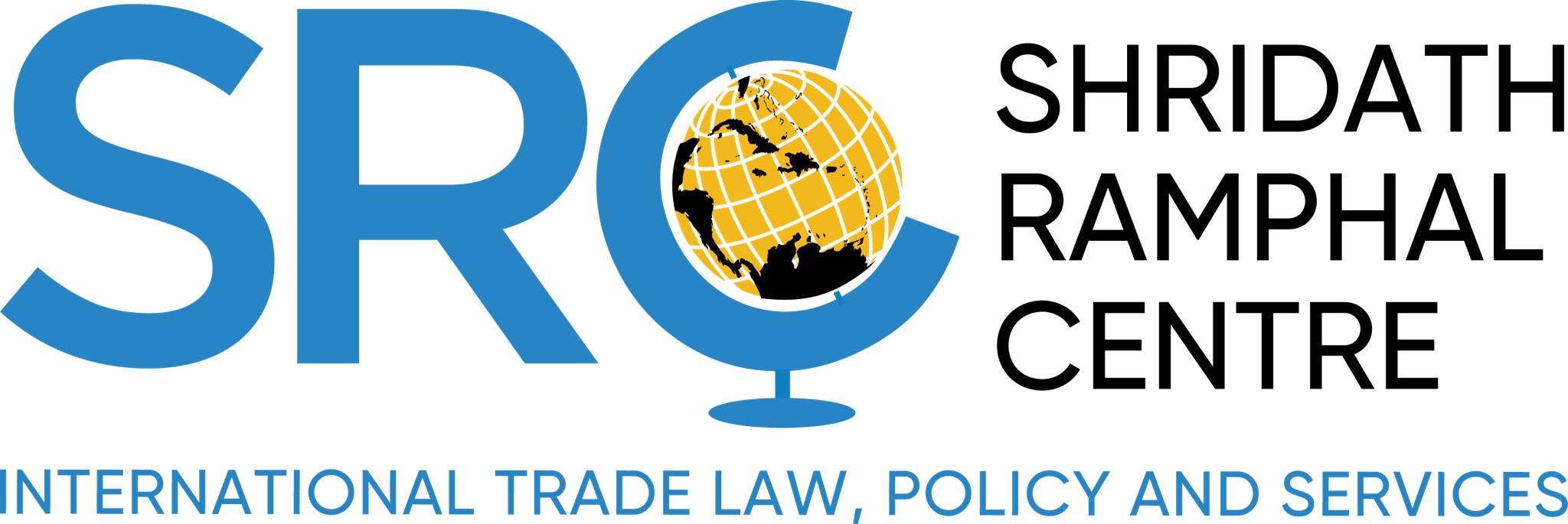Dr. Jan Yves Remy
As COVID-19 continues to grip the world’s attention, a consequential new development has crept into the halls of the dispute settlement system at the World Trade Organization (WTO). On 27 March 2020, 16 of the WTO’s 164 Members announced their agreement to use arbitration procedures provided for under WTO rules as a temporary fix to conduct WTO appeals. First touted as a possible (academic) solution to the then impending crisis at the WTO, the Multi-Party Interim Appeal Arbitration Arrangement pursuant to Article 25 of the DSU (or the MPIA) has emerged as a concrete response to the halting of operations at the Appellate Body since December last year. Once it is formally communicated to the WTO’s Dispute Settlement Body (DSB) – expected to happen any day now – the MPIA framework agreement will take effect among its participating Members.
But there is a glaring omission in the MPIA’s membership. Although many of the MPIA’s 16 participating Members – the European Union (EU), Brazil, Mexico, China, Chile, Guatemala, Australia and New Zealand, Colombia, Costa Rica, Hong Kong, China, Norway, Singapore, Switzerland and Uruguay – count themselves among the WTO’s top dispute settlement users, the absence of the United States – the most litigious WTO Member – looms large and, for some, seals the MPIA’s fate.
But, even without the United States, the MPIA is a significant development. Just as the GATT – intended as a provisional arrangement – endured for half a century before the WTO was eventually created, the MPIA is likely to serve as a de facto appeal system until and unless another viable option is put on the table. In this SRC Trading Thoughts, we provide some initial thoughts on the main elements of the MPIA and discuss concerns that non-participating Members, including CARICOM countries, may wish to consider carefully.
KEY COMPONENTS OF THE MPIA
By design, the MPIA provides an “interim” regime for appellate proceedings for “as long as the Appellate Body is not able to hear appeals”. It is, therefore, expressly without prejudice to finding a lasting solution to the appeal crisis. Its drafters aim to safeguard two important aspects of the WTO’s dispute settlement system – its binding character and the two-level adjudication process – while also ensuring independence and impartiality in appeals.
The framework set up under the MPIA comprises three main parts: the overarching institutional arrangement; the procedures for the conduct of MPIA appeals (Annex 1); and the system for selecting a “pool” of arbitrators (Annex 2).
Under the institutional arrangement set up under the first part, participating Members give their consent to use the MPIA as a basis for settling future appeals among themselves. In addition, it sets forth aims of the MPIA; the procedures for joining and withdrawing from it; the duties and responsibilities of the arbitrators selected to serve under it; and how, procedurally, it will operate alongside the other aspects of the dispute settlement procedures, including panel proceedings.
Annex 1 sets out the default procedures to be used by participants signing onto the MPIA. In effect, the procedures use the arbitration process under Article 25 of the DSU as a receptacle to replicate the main features of the existing WTO appeal process. Thus, it mimics the original system’s time frames for completion of appeals; the scope of the appeals and the powers of arbitrators; process for selecting the Division to settle appeals; and the overall decision-making process. The MPIA however, is not a perfect replica and makes some adjustments to ensure that the new procedures could be effectively grafted onto existing ones. For instance, participating Members must notify an agreement to arbitrate under the MPIA 60 days after panels are established; and must request that panels suspend their work after they have issued their interim reports so that an appeal arbitration can begin without the risk that the panel report will be adopted during the pendency of panel proceedings.
Other innovations, however, appear to be nod to the United States and go some way in addressing its longstanding concerns. For instance, the MPIA provides that support staff to arbitrators are “answerable… only to appeal arbitrators”; that arbitrators are permitted to “streamline procedures” including through the imposition of page and time limits and deadlines; and that arbitrators be granted powers to dismiss claims alleging a failure of the panel to objectively assess facts and otherwise only address those issues deemed necessary to resolve a dispute.
Finally, the MPIA establishes a system for selecting the pool of arbitrators from which the division of three arbitrators per case will be composed. Each of the 16 members nominates one candidate to a pre-selection committee comprising the WTO Director General and other Chairs of relevant WTO committees. The pre-selection committee’s job is to “screen” the nominees for selection by the participating Members, who must agree to a final list of ten arbitrators by a process of “consensus”. Notably, current and past Appellate members are excluded from the pre-selection screening process and are automatically eligible for selection. Arbitrators must possess the same qualifications and competences as the Appellate Body Members. However, unlike the previous system where seven judges are chosen for a period of four years, (renewable once) on the basis of broad geographic representativeness, under the MPIA, ten arbitrators are to be chosen on the basis of an “appropriate overall balance”.
MISSED OPPORTUNITY?
Given the extent of the criticism levelled at the Appellate Body over the past few years, one would expect the MPIA’s participating members to use the malleable features of the arbitration process to correct some of the previous system’s inefficiencies. Surely, it would make little sense to replicate to features of appeal that did not work well. So, is the MPIA an improvement or does it merely repeat the sins of its predecessor?
An oft-voiced complaint is that WTO appeals conducted by the Appellate Body have been unwieldy, process-heavy and protracted. The US is a vocal opponent of the Appellate Body’s penchant for overreach, its tendency to exceed the 90-day time frame for disposing of appeals, and its addressing of issues not squarely before it. While the MPIA envisages that arbitrators will have more control over procedures, the marginal powers granted – for instance the ability to impose page limits – arguably do not go far enough. Perhaps some lessons from commercial arbitration are worth taking onboard. Under that system, arbitrators play a crucial role in case management at very early stages of the dispute and therefore exert greater control over the process. In close consultation with the parties, an arbitrator on appeal could similarly be empowered to delimit the scope of the dispute by establishing the relevant parts of the factual record and front loading the core issues in dispute so that the proceedings can be more efficiently conducted. With more control, arbitrators can adapt the procedures to fit the particularities of a given case, thereby streamlining the case and eliminating the excesses of the current system.
For parties to feel comfortable with a more intrusive role for the arbitrator, the judges selected must inspire their confidence and exude impartiality, representativeness and competence. Indeed, these are virtues that any successful judiciary must espouse, even more so in a system as complex and partisan as the WTO.
On this score, the MPIA arguably does little to improve on the selection process for choosing Appellate Body Members and may well exacerbate it. For one thing, the ultimate selection of the final 10 out of 16 Members nominated still relies on “consensus” – a decision-making device that has been the downfall of the current system. Although at first blush it may seem easier to find consensus among 16 – rather than 164 – Members, where the chance of having your candidate selected is higher, giving him or her up in favour of someone else’s, may in fact prove more difficult.
And what about representativeness in the judiciary? For participating Members, “overall balance” is all but assured given the odds of their nominees being selected. But there is a real concern that the MPIA system perpetuates biases in favor of certain types persons to serve, namely known entities (the system automatically qualifies existing or past Appellate Body Members) and nominees of the frequent users of system. It also locks in the initial slate of arbitrators selected by the first 16 participating Members since the process for the re-composition of the entire pool will only take place two years after the MPIA comes into effect. This creates very little incentive for WTO Members to sign on after the first pool of arbitrators has been selected.
HERE TO STAY…?
For all its laudatory intentions, the MPIA is unlikely to gain widespread popularity, at least in the short term. For one thing, Members will be hesitant to sign up to the new system until it has been tested and its kinks have been worked out. For another, its full implications are yet to be explored: how will the jurisprudence created under it be treated – as a sub-system of law among a subset of Members, or as part of the general acquis of the WTO? And what would this all do to the consistency and predictability that the WTO dispute settlement system is meant to engender?
Perhaps the most important, but unpredictable, factor determining the fate of the MPIA is this – what will the United States make of it? The United States reaction to the MPIA is crucial not only because of the amount of case law it generates, but also because countries reliant on its largesse and vulnerable to its influence are unlikely to become participating Member unless and until they have a clear indication of what the US thinks. As it stands, the United States has little incentive to act one way or another, and the current arrangement might well play right into its hands. By remaining outside the MPIA arrangement, the United States can continue to use the WTO system selectively. If it does not prevail in a case, it can simply appeal to a non-existent Appellate Body and effectively render the decision of the panel ineffective. Doing nothing also allows the United States to remain unengaged in ongoing reform negotiations while claiming that other Members are “doing their own thing” and are not being prejudiced by the United States’ apparent intransigence.
Whatever one thinks about it, the announcement of the MPIA forces WTO Members to at the very least consider it. While views may differ on what it presages for dispute settlement at the WTO, we can all agree that it serves as a sad reminder of the fragmented state of a system that once represented the epitome of multilateralism.
Dr. Jan Yves Remy is the Deputy Director of the Shridath Ramphal Centre for International Trade Law, Policy & Services (SRC) of The University of the West Indies, Cave Hill. Learn more about the SRC at www.shridathramphalcentre.com


